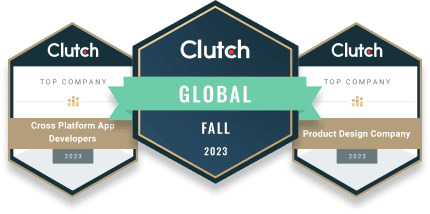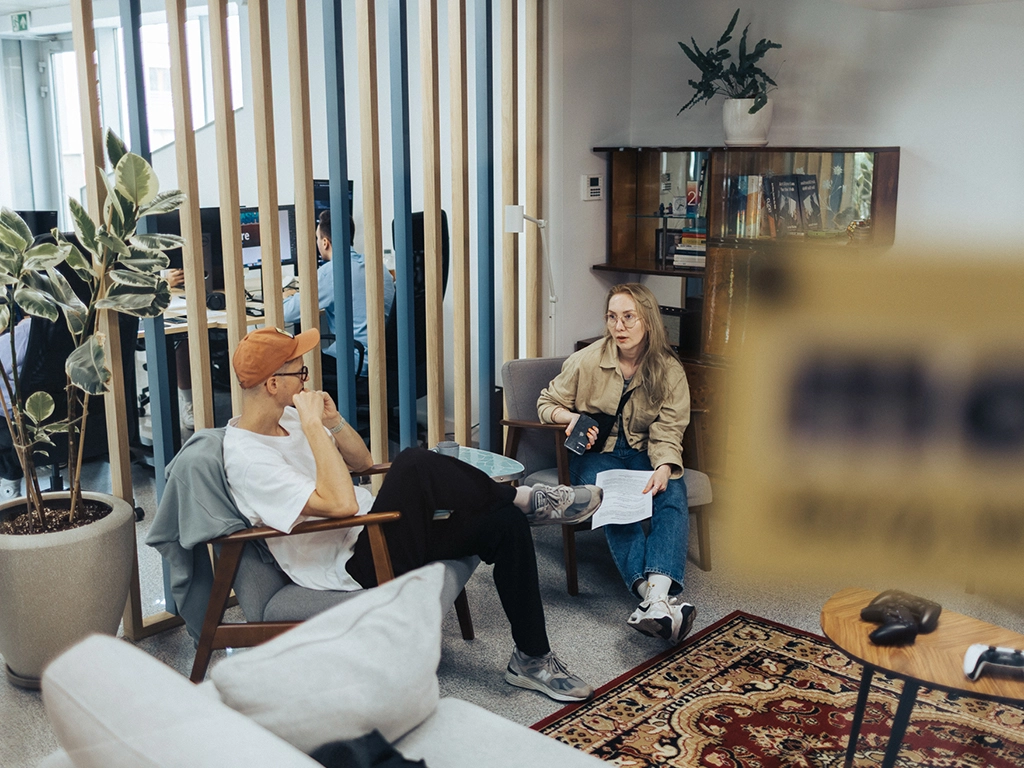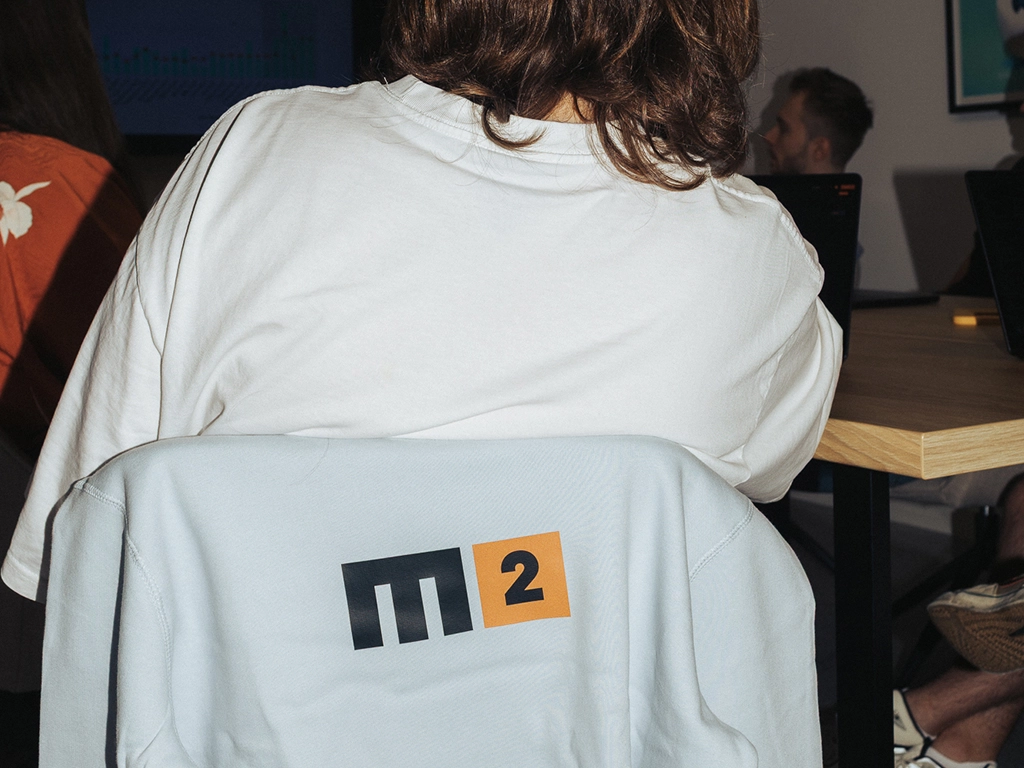App Onboarding - The Importance Of Presenting Your App To New Users
Table of Contents
In today's bustling mobile app market, creating a seamless and engaging user experience is more important than ever. A well-designed app onboarding process can wow your users and encourage them to explore everything your app has to offer. This guide outlines best practices for creating an effective onboarding flow that keeps users interested.
We will cover the meaning and importance of app onboarding and explore creative ways to implement UX and UI design principles. The guide includes a handy checklist of strategies to enhance your onboarding process and inspiring examples that showcase these best practices in action. Whether you are an experienced app developer or just starting in mobile design, you’ll find valuable insights to help you create an outstanding onboarding experience.
Let's explore how to create those aha moments where users first experience the true value of your app. Make a strong impression from the first screen and see how effective onboarding can enhance user engagement and satisfaction.
What Is Mobile App Onboarding?
Mobile app onboarding is the process of introducing new users to your app's features, functionality, and user interface. It is a crucial step in helping users understand how to navigate and use your app effectively. The onboarding process typically consists of a series of screens or interactive tutorials that guide users through the app's key features and benefits.
User Experience (UX) and User Interface (UI) design play a critical role in the onboarding process. UX ensures that each step towards achieving users' goals is intuitive and straightforward.
”User Experience focuses on the path that the user must go through to accomplish the goal.
For instance, if a user wants to change the language, they need to click on the menu, go to settings, find the language option, select their preferred language, and click save. This straightforward process should apply to all critical features in your app, ensuring they are easy to find and use. It’s crucial to make key features easily visible and accessible while secondary features can be tucked away in the menu.
The buttons, colors, backgrounds, and fonts — all these visual elements make up the UI. A well-designed UI allows users to quickly and easily find the settings they need. Clean and simple interfaces are highly attractive to customers, while apps with cluttered and chaotic designs often frustrate users and are less likely to be chosen.
App onboarding is not just a one-time event — it can occur multiple times throughout the app's lifetime, especially when new features or visual improvements are implemented. The goal is to make the initial user experience seamless and informative, encouraging users to explore and utilize the app's full potential.
Mobile App Development Life Cycle: 6 Stages & Process Flow
Investing time and resources into creating an effective app onboarding process can significantly impact your app's success, user satisfaction, and long-term growth. Successful app onboarding is essential for several reasons:
- User retention. A well-designed onboarding process can increase user retention rates by up to 50%. By providing users with a clear understanding of your app's value and functionality, they are more likely to continue using it and explore its features.
- User engagement. Onboarding helps users quickly understand how to use your app, reducing the learning curve and increasing engagement. When users feel confident and comfortable navigating your app, they are more likely to spend time using it and discover its benefits.
- Competitive advantage. With millions of apps available, it's crucial to stand out from the competition. A smooth and intuitive onboarding experience can differentiate your app and create a positive first impression, increasing the likelihood of users choosing your app over others.
- Reduced user frustration. A confusing or lengthy onboarding process can frustrate users, leading them to abandon your app. By providing clear guidance and highlighting key features, you can minimize user frustration and create a more enjoyable experience.
Why Is Mobile App Onboarding the Key to Retention?
Convincing a new customer to choose your app among countless others is a significant achievement, but it's only the beginning. Once you've attracted a user, the real challenge is keeping them engaged so they don't get bored or frustrated and abandon the app. Retaining users is crucial to your app's long-term success, ensuring they continue to find value and enjoyment in using it.
”User Retention indicates the continuing reuse of your product or feature. It's one of the most critical indicators that shows the liveability of your app.
Statistics show that a positive onboarding experience significantly boosts user retention. When users receive helpful tips and guidance, they feel supported and more confident in navigating the app, increasing their desire to use it.
Effective app onboarding introduces customers to your app's features, helping them explore key functionalities and discover additional options hidden in the menu or settings. The more familiar first-time users become with your app's capabilities, the more likely they are to stick with it, leading to higher retention rates.
2 Types of Mobile App Onboarding
Now that we understand what app onboarding is and the basic concepts behind it, let's dive deeper into the onboarding process. We can identify two types of onboarding flows — generic and contextual onboarding.
Generic Onboarding — An All-In-One Solution
Generic onboarding introduces users to all the app's features at once, typically immediately after they first open the app. This comprehensive approach ensures that users are aware of every function and possibility within the app from the outset.
Benefits
- Complete overview. Users get a full picture of the app's capabilities.
- Encourages exploration. Users know all their options and might be encouraged to explore more features later.
- Quick start. Users can quickly see the value of the app by understanding all its functionalities upfront.
Drawbacks
- Information overload. Presenting too many features at once can overwhelm users, especially if the app is complex.
- Retention issues. Users might forget much of the information provided if it's delivered in a lengthy, single session.
Example Flow
- Launch the app.
- Sign up or log in.
- Tutorial — a detailed walkthrough of all the app's features in sequence.
Generic Onboarding Examples
- When you first open Duolingo, it provides a comprehensive tutorial on how the app works, covering key features like selecting a language, setting goals, and understanding the basics of its lessons and streaks.
- Slack introduces new users to its wide range of features through a detailed onboarding sequence when they first sign up.
Contextual Onboarding — A Step-By-Step App Experience
Contextual onboarding, on the other hand, introduces features gradually as users encounter them. This method breaks the onboarding process into smaller, manageable chunks, making it easier for users to learn and retain information.
Contextual onboarding is especially beneficial for complex apps with numerous features. It allows users to learn at their own pace without feeling overwhelmed. However, it might not be as necessary for simpler apps with only a few core functionalities.
Benefits
- Manageable information. Users receive information in smaller doses, which is easier to understand and remember.
- Focused learning. Users can focus on learning one feature at a time, which can lead to better retention.
- Customization friendly. Easier to customize the onboarding experience, for example, with a gamified tutorial or a company mascot guiding users and collecting additional information.
Drawbacks
- Not suitable for all apps. Apps with fewer features might find this method less effective.
- Initial learning curve. Users may need a basic understanding of the app before they can benefit from contextual tips.
Example Flow
- Launch the app.
- Sign up or log in.
- The initial tutorial on core functionalities is on the welcome screen.
- As users navigate the app and use different features, short tutorials or tips appear to guide them.
Contextual Onboarding Examples
- Asana uses contextual onboarding to help users gradually learn about its project management features as they use the app.
- Airbnb employs contextual onboarding to help users understand how to navigate its platform, especially as both hosts and guests.
The Core Features of an Onboarding Process
Although every app has unique UX and UI requirements, there are certain elements that should be standard in every app tutorial. Onboarding screens play a crucial role in making your app recognizable and contributing to its success. To keep users engaged and loyal, make sure to include these essential onboarding elements in your app's process:
Welcoming Screen
The first thing a new user sees after launching your app is the welcoming screen. This initial interaction is critical, as it sets the tone for the user's experience. Just like the classic "Hello, world!" in programming, a welcoming message in your app can make a strong first impression. Don’t overlook this detail — a poor first impression can lose you a potential customer.
Splash Screen
A splash screen is what users see while your app is loading. It typically features your logo and a loading indicator. However, it doesn't have to be boring. Use this opportunity to display a welcoming message, helpful hints, or something that brightens the user's day, making them more likely to continue using your app.
Personalized Setup Experience
Users appreciate personalization, whether it's the app's theme color, customizable widgets, or a unique avatar. Offering a personalized setup experience can significantly increase your app's appeal. By asking a few questions during onboarding, you can tailor the tutorial to meet the user's needs better. For example, in a language learning app, guide users on how to switch to the appropriate keyboard for their chosen language.
Effective User Guidance
Once the fun elements like avatars and nicknames are set up, it’s time to guide users through your app's core functionalities efficiently and engagingly. Here are a few methods:
- Carousels. Full-screen instructions that users can swipe through. Adding progress indicators helps users understand how much more they need to complete.
- Lightboxes. Pop-up windows that darken the background to focus attention on the message. This method ensures users absorb crucial information without distractions.
- Tooltips. Brief messages that appear when users click on an icon, such as a question mark. These should be quick to read and directly related to the feature they accompany.
- Hover boxes. Messages that appear when users hover over an element with their cursor. These are useful for providing additional information without interrupting the user’s flow.
- Sticky footers. Floating banners at the bottom of the screen that remain visible as users scroll. These provide continuous access to hints and tips without the need to search for a help tab.
Mobile App Onboarding Best Practices
Effective onboarding is crucial for user retention and satisfaction. Here are the best practices for creating a smooth and engaging onboarding process:
- Start with easy wins. Begin with simple tasks to build user confidence, then introduce more complex features. This motivates users to complete the tutorial.
- Include a Skip button. Cater to users who prefer to explore independently or returning users who want to bypass onboarding. This enhances user satisfaction.
- Customize the experience. Personalize onboarding by asking questions during account creation. Tailor the tutorial to focus on essential features, minimizing steps and making the process more relevant and enjoyable.
- Incorporate gamification. Use game-like elements to make the onboarding process interactive and engaging, increasing user retention.
- Use microcopy. Provide helpful, concise text and tips to guide users and add personality to pages. This keeps users engaged and makes the process feel faster.
- Collect information with minimal friction. Simplify login and account activation. Test different methods, such as social media logins versus email logins, to find the most user-friendly option.
- Show progress. Use a progress bar to indicate how much of the onboarding process is left. This sets clear expectations and reduces user anxiety, making users more likely to complete the onboarding.
- Minimize onboarding steps. Include only essential steps initially, introducing advanced features gradually. Request permissions only when necessary for the app’s functionality.
- Track onboarding funnels. Monitor where users drop off to identify and fix challenging steps. This helps improve the onboarding flow and UX.
Common Mistakes to Avoid When Creating an App Onboarding UX
Creating an effective app onboarding experience is crucial for retaining users and ensuring they have a smooth introduction to your app. However, several common mistakes can derail this process and lead to user frustration or abandonment. Here are some pitfalls to avoid:
Overwhelming users with excessive information.
Avoid overwhelming users with too much information during onboarding for several reasons:
- Sensory overload. Users can become overwhelmed and fatigued when presented with too much information at once, negatively impacting their overall experience.
- Irrelevant information. Including information that doesn’t apply to the user’s immediate needs or use case can make them doubt the app’s relevance, potentially driving them to seek alternatives.
- Extended onboarding flows. Long and drawn-out onboarding processes test users' patience and attention spans, increasing the likelihood of drop-offs.
Leaving empty states ‘“blank”.
Ensure that empty states in your app provide some guidance. Blank empty states can confuse users if left without instructions. Include simple CTAs or checklists to guide users on what steps to take next, ensuring they can start using the app effectively.
Neglecting to test and improve the user onboarding flow.
Continuously test and improve the onboarding process to enhance its effectiveness:
- Track user progress. Monitor where users drop off or slow down in the onboarding process. This data can highlight problematic areas that need refinement.
- A/B testing. Implement changes and compare them against the original flow to see which performs better. This iterative process helps optimize the onboarding experience.
Best Mobile App Onboarding Examples
Let's explore some best practices for creating an engaging and exciting onboarding experience. We'll highlight a few possibilities, but there are many more unique onboarding flows to discover!
Games Are Doing It Right
In the gaming industry, the tutorial is a critical moment. If it's monotonous and drawn out, players may quit before the game even starts. However, it's essential to show players all the keys and combinations so they know how to play. This necessity drives developers to get creative with their onboarding processes, ensuring they are both informative and captivating.
The Legend of Zelda series is legendary in its own right, but let's focus on how Breath of the Wild handles onboarding. Right from the start, you're immersed in the vast world of Hyrule and its unfolding story. The game provides a basic tutorial that introduces key controls, but beyond that, it leaves you to discover and explore on your own. This approach turns the tutorial into an exploration quest, allowing players to naturally adapt to the controls and gameplay mechanics at their own pace.
Undertale follows the story of a little human who falls into a world filled with strange creatures. The game starts with a short tutorial, but this tutorial is more than it seems. It keeps track of your actions from the very beginning, influencing the game as you play. As you go along, you'll learn that not everything on the screen can be trusted. This makes the tutorial an essential part of the game's intriguing and memorable experience.
Banking Apps That Require Extensive Data
Onboarding can be particularly challenging for apps that require extensive data. While these apps need a lot of information, making users fill out lengthy forms can be very demotivating, especially for inexperienced teams.
Revolut, a popular banking app, faced this challenge head-on. As a banking service, it needs a lot of data to open an account and ensure the user isn’t a fake. Traditionally, this would involve lengthy forms that could frustrate impatient users.
However, Revolut found a smart solution. Instead of having users fill out all the forms, they ask for a photo of the ID and a selfie. Their advanced program then analyzes the images to verify the user's identity. This approach significantly shortens and simplifies the onboarding process, making it much more pleasant for new users.
Language Learning Apps
Onboarding is crucial for language learning apps to retain users. These apps need to set up the target language, explain how the app works, and engage users to make them feel the flow of knowledge.
Drops is a fun and easy-to-use app focused on vocabulary building. Once users select their target language, the app guides them through various exercises. It uses both listening and visual memory techniques, catering to different learning styles. The app's colorful and engaging design keeps users motivated to continue learning.
Lirica leverages the universal love of music to make language learning enjoyable. The app shows you how to navigate its features, including how to view lyrics, translate phrases, and practice pronunciation. This initial walkthrough ensures that users understand how to make the most of the app's resources. By combining the joy of music with effective language learning techniques, Lirica makes the onboarding process both informative and enjoyable, setting users up for a fun and productive learning experience.
Diet Catering Apps
One of the most exciting onboarding processes involves food, especially when it’s not just a single dish. This is particularly important for diet catering, where nutritional values must be carefully balanced to ensure clients are satisfied with their meals.
Primate is a Polish diet catering app that offers a variety of diets and customizable ingredient options. During the onboarding process, clients can specify their dietary preferences, including allergies, ingredients to include or exclude, and desired calorie intake for each meal. This ensures that clients receive meals tailored to their needs. The food is neatly packed and delivered fresh at the start of each day.
Top In-App Onboarding Tools
Creating a personalized and effective onboarding experience is crucial for user retention and satisfaction. Here are three top tools to help you build superior in-app onboarding experiences:
Userpilot is a versatile product adoption platform that lets you design customized onboarding flows without coding. It’s main feature are:
- Dynamic UI elements. Use tooltips, modals, banners, and more to create engaging user journeys.
- A/B testing. Experiment with different flows to find what works best.
- Feature tagging & heatmaps. Track user interactions and visualize engagement.
- Comprehensive analytics. Monitor key metrics and optimize user adoption.
- Feedback surveys. Gather user insights with customizable surveys.
Appcues excels in mobile app onboarding, providing tools to engage users from the start:
- User segmentation. Personalize experiences based on user behavior.
- Interactive flows. Guide users with tooltips, modals, and checklists.
- Flow analytics & A/B testing. Analyze and optimize onboarding steps.
- In-app guidance. Offer self-service help to users.
- Feedback collection. Use in-app surveys to gather user feedback.
UXCam offers deep insights into user behavior, helping you create data-driven onboarding experiences. Here are its highlights:
- Session recording. Watch how users interact with your app in real-time.
- Heatmaps. Identify hot spots and areas of friction.
- User journey analysis. Track and optimize user paths.
- Crash analytics. Detect and fix issues quickly.
- Custom events. Monitor specific user actions to refine onboarding flows.
How a Software House Can Enhance Your App Onboarding Process
While in-app onboarding tools like Userpilot, Appcues, and UXCam are powerful, a software house can take your onboarding process to the next level. Here’s why:
Expertise and experience
- Specialized skills. A software house brings a team of experts skilled in UX/UI design, development, and data analysis, ensuring a technically sound and user-friendly onboarding process.
- Proven strategies. With experience across multiple projects, we can apply proven onboarding strategies tailored to your specific audience and business goals.
Customization and flexibility
- Tailored solutions. We develop customized onboarding experiences that align with your brand, including personalized user flows, interactive tutorials, and engaging welcome screens.
- Adaptability. As your app evolves, we continuously refine and enhance the onboarding process based on user feedback and analytics.
Advanced analytics and optimization
- Data-driven insights. By implementing advanced analytics, we track user behavior during onboarding to identify drop-off points and areas of confusion.
- A/B testing and iteration. We manage A/B tests and iterate on different onboarding elements to optimize user retention.
Continuous support and maintenance
- Ongoing assistance. Post-launch, we provide continuous support to address technical issues, update features, and adapt the onboarding process to changing user needs.
- Scalability. As your user base grows, we scale the onboarding process to remain effective for a larger and more diverse audience.
FAQs on Outsourcing Mobile App Development
How is mobile app development outsourcing different from general custom software development outsourcing?
Mobile app development is a bit different from general software development outsourcing because mobile apps are built for use on specific platforms. To create a hybrid app that functions on both iOS and Android, you need to understand the various distinctions between those two platforms, but with the right technologies, you can use one codebase for both systems.
Mobile apps also demand a knack for UI and UX design and specific technical know-how, like how to weave them into existing systems seamlessly.
Testing is also critical and must be considered during the project plan. Mobile devices come in many sizes and resolutions, and testing mobile apps is much more demanding than desktop or web software. Especially if you're aiming to have your app available on wearables.
How much does it cost to outsource mobile app development?
The cost to outsource mobile app development really depends. In the UK and US, hourly rates range from $15-$45 for junior developers to $50-$100 for seniors. The final price is influenced by several factors, including:
- The development team's location
- App complexity and type
- Development purpose and urgency
- Platforms supported
- Development approach and UI/UX design complexity
- Back-end infrastructure needs
How can I reduce the risks of mobile app development outsourcing?
Minimizing risks in outsourcing mobile app development is all about smart planning and clear agreements. These steps can help you choose a reliable partner and create a successful outcome for your app development project:
- Research thoroughly. Investigate potential companies by reviewing their case studies, asking for references, and testing apps they’ve developed.
- Sign an NDA. Protect your app idea and sensitive information with a non-disclosure agreement.
- Set communication rules. Define how and when you’ll communicate, especially with offshore teams, to ensure smooth collaboration.
- Split payments. Avoid large upfront payments by agreeing to installment payments, protecting your investment in the early stages.
How can I find the best outsourcing company for mobile app development?
Finding the best outsourcing company for mobile app development starts with doing your homework. Dive into their past projects, check out reviews, and maybe even download some apps they've developed to see their work in action. Recommendations can also be golden, so ask around within your network. Don’t forget to discuss your project in detail with potential companies — this will give you a feel for their expertise and whether they understand your vision.
Is it better to outsource mobile app development?
Outsourcing mobile app development can be a great choice if you're looking for expertise, cost savings, and efficiency. It allows you to tap into global talent, get your app to market faster, and often at a lower cost than hiring a full in-house team. Plus, it lets you focus on your core business while experts handle the technical side. However, it's important to choose the right partner to ensure your vision is accurately brought to life.
Why should I hire offshore developers?
Hiring offshore developers not only grants you access to a vast talent pool but also comes with the advantage of cost-effectiveness. You can often find high-quality work at a fraction of the cost compared to local rates. This approach can accelerate your projects with continuous progress across different time zones and inject new perspectives into your work, allowing for rapid scaling without breaking the bank.
Memory Squared

Trusted by both innovative startups and large international companies.

Awarded as one of the best 2024 software companies globally
What we do
We can cover the whole process and product development life cycle but we’re also open to sending our developers and designers on a mission to join your team. We’re comfortable working closely with business managers to creatively place digital products into their strategy.








